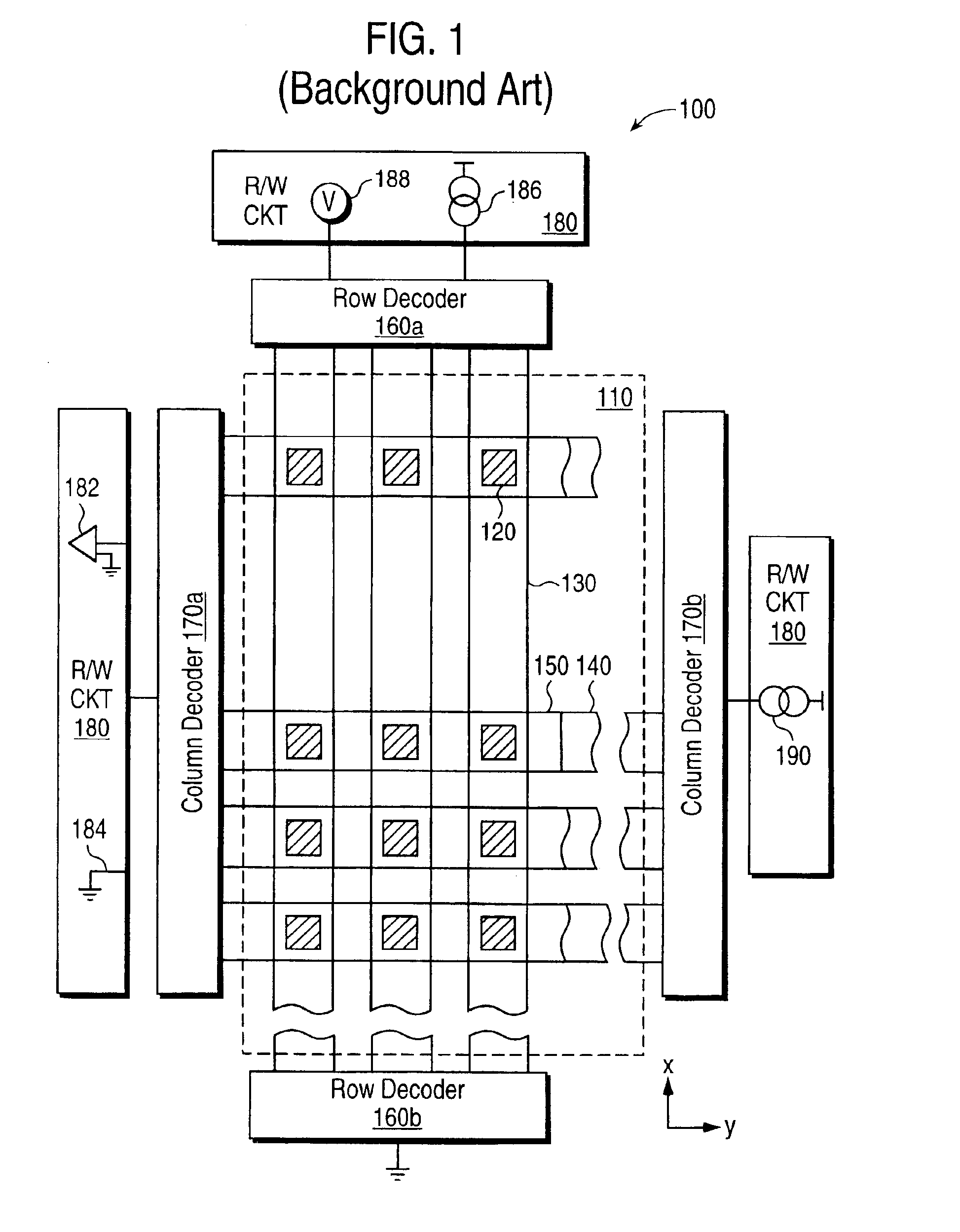Magnetic shielding for reducing magnetic interference
a magnetic interference and shielding technology, applied in the field of memory chips, can solve the problems of increasing magnetic interference among neighboring memory cells, fringe magnetic fields may even corrupt data, etc., and achieve the effect of reducing undesirable magnetic interference and reducing magnetic interferen
- Summary
- Abstract
- Description
- Claims
- Application Information
AI Technical Summary
Benefits of technology
Problems solved by technology
Method used
Image
Examples
Embodiment Construction
I. Overview
Section II describes an exemplary MRAM device, known in the background art, in connection with which the various exemplary embodiments to be described in Sections V, VI, and VII may be implemented. Section III describes an exemplary memory cell of the exemplary MRAM device. Section IV sets forth the phenomenon of magnetic interference, known in the background art, which is reduced in accordance with various exemplary embodiments to be described in Sections V, VI, and VII. Sections V, VI, and VII illustrate various exemplary embodiments of techniques for reducing magnetic interference, exemplary MRAM devices using such techniques, and exemplary manufacturing processes for such devices.
II. An Exemplary MRAM Device
FIG. 1 illustrates an exemplary MRAM device 100 including an array 110 of magnetic memory cells 120. The magnetic memory cells 120 are arranged in rows and columns, for example, the rows extending along the y-axis and the columns extending along the x-axis. In FIG....
PUM
 Login to View More
Login to View More Abstract
Description
Claims
Application Information
 Login to View More
Login to View More - R&D
- Intellectual Property
- Life Sciences
- Materials
- Tech Scout
- Unparalleled Data Quality
- Higher Quality Content
- 60% Fewer Hallucinations
Browse by: Latest US Patents, China's latest patents, Technical Efficacy Thesaurus, Application Domain, Technology Topic, Popular Technical Reports.
© 2025 PatSnap. All rights reserved.Legal|Privacy policy|Modern Slavery Act Transparency Statement|Sitemap|About US| Contact US: help@patsnap.com



